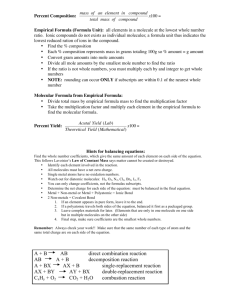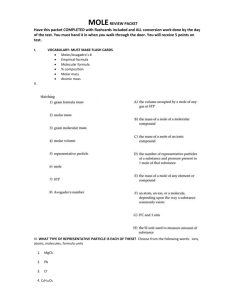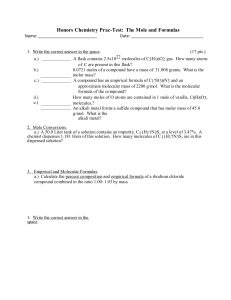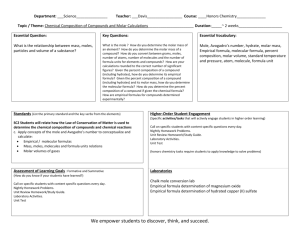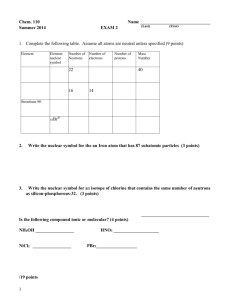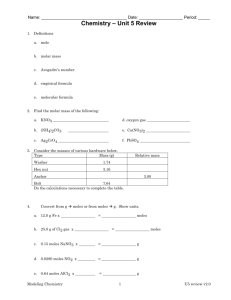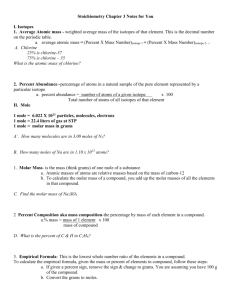9 - Chemistry Test 3 Study Guide REVISED - Chemistry
advertisement
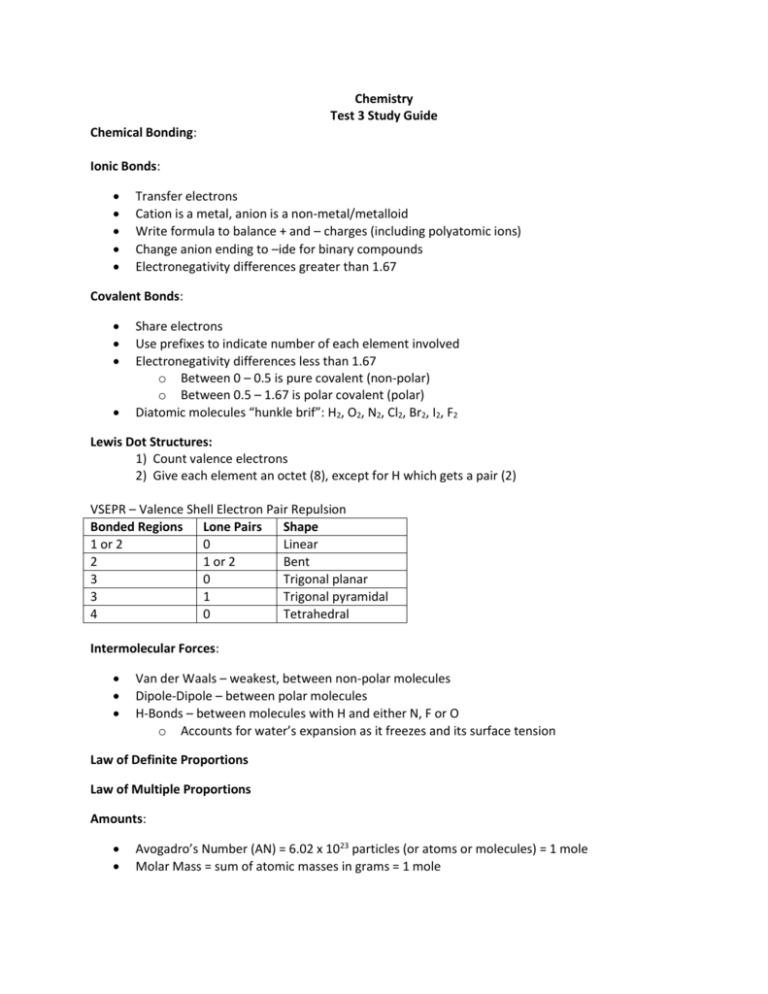
Chemistry Test 3 Study Guide Chemical Bonding: Ionic Bonds: Transfer electrons Cation is a metal, anion is a non-metal/metalloid Write formula to balance + and – charges (including polyatomic ions) Change anion ending to –ide for binary compounds Electronegativity differences greater than 1.67 Covalent Bonds: Share electrons Use prefixes to indicate number of each element involved Electronegativity differences less than 1.67 o Between 0 – 0.5 is pure covalent (non-polar) o Between 0.5 – 1.67 is polar covalent (polar) Diatomic molecules “hunkle brif”: H2, O2, N2, Cl2, Br2, I2, F2 Lewis Dot Structures: 1) Count valence electrons 2) Give each element an octet (8), except for H which gets a pair (2) VSEPR – Valence Shell Electron Pair Repulsion Bonded Regions Lone Pairs Shape 1 or 2 0 Linear 2 1 or 2 Bent 3 0 Trigonal planar 3 1 Trigonal pyramidal 4 0 Tetrahedral Intermolecular Forces: Van der Waals – weakest, between non-polar molecules Dipole-Dipole – between polar molecules H-Bonds – between molecules with H and either N, F or O o Accounts for water’s expansion as it freezes and its surface tension Law of Definite Proportions Law of Multiple Proportions Amounts: Avogadro’s Number (AN) = 6.02 x 1023 particles (or atoms or molecules) = 1 mole Molar Mass = sum of atomic masses in grams = 1 mole Empirical Formula Hydrate Lab Vocab to know: anion, binary compound, cation, empirical formula, hydrate, molar mass, mole, molecular formula, monatomic ion (ex. K1+), polyatomic ion (ex. NO31-), Practice Problems: 1) Find the molar mass of Al2S3. 2) What is the mass in grams of 2.50 moles of oxygen gas? 3) How many moles of compound are in 77.1g Cl2? 4) How many molecules are in 77.1 g Cl2? 5) What is the percent composition of PbCl2? 6) What is the empirical formula for C6H12O6? 7) What is the empirical formula for a compound that contains 32.38% sodium, 22.65% sulfur and 44.99% oxygen? a) If you had a 100 gram sample of the compound, how many grams of each element would you have? b) How many moles of each element would that be? c) Find the smallest whole-number mole ratios. d) Write the empirical formula of the compound. 8) What is the molecular formula of a compound whose empirical formula is P2O5 and whose molar mass is 283.89 g/mol? 9) List the prefixes for 1-10. (ex. 1 = mono) 10) List the 7 diatomic molecules.
